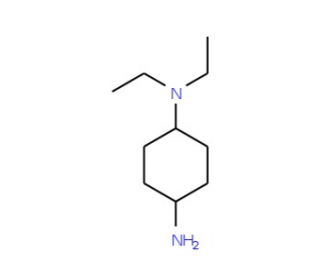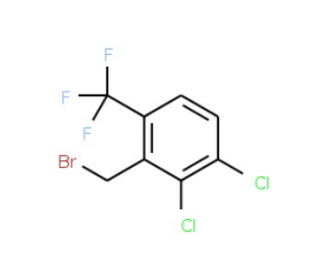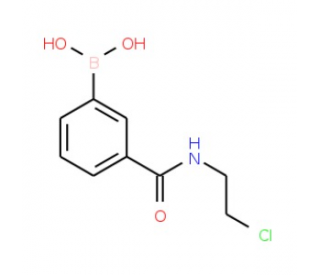详细说明
Species Reactivity
Human
Specificity
Detects human EphA2 in direct ELISAs and Western blots. In direct ELISAs, no cross-reactivity with recombinant mouse EphA4, A5, A6, A7, A8, or recombinant rat EphB1 is observed.
Source
Monoclonal Mouse IgG 2A Clone # 371805
Purification
Protein A or G purified from hybridoma culture supernatant
Immunogen
Mouse myeloma cell line NS0-derived recombinant human EphA2
Gln25-Asn534
Accession # P29317Formulation
Supplied in a saline solution containing BSA and Sodium Azide.
Label
Alexa Fluor 700
Applications
Recommended
ConcentrationSample
Flow Cytometry
5 µL/10 6 cells
See below
Please Note: Optimal dilutions should be determined by each laboratory for each application. are available in the Technical Information section on our website.
Data Examples
Flow Cytometry | Detection of EphA2 in A431 Human Cell Line by Flow Cytometry. A431 human epithelial carcinoma cell line was stained with Mouse Anti-Human EphA2 Alexa Fluor® 700‑conjugated Monoclonal Antibody (Catalog # FAB3035N, filled histogram) or isotype control antibody (Catalog # , open histogram). View our protocol for . |
Preparation and Storage
Shipping
The product is shipped with polar packs. Upon receipt, store it immediately at the temperature recommended below.
Stability & Storage
Protect from light. Do not freeze.
12 months from date of receipt, 2 to 8 °C as supplied.
Background: EphA2
EphA2 (Erythropoietin-producing Hepatocellular Carcinoma-A2), also known as Eck, Myk2, and Sek2, is a 120-130 kDa member of the Ephrin receptor subfamily, tyrosine protein kinase family of molecules. It is one of at least 13 mammalian subfamily members that are divided into two groups (A and B) that are named for the corresponding class of ligand (Ephrins [Eph-receptor Interacting Protein]) to which they bind (1, 2). Mature EphA2 is a 953 amino acid (aa) type I transmembrane glycoprotein that contains a 514 aa extracellular domain (ECD). The ECD is characterized by the presence of one Eph ligand-binding domain and two fibronectin type III repeats. EphA2 binds Ephrins A1-A5, with subsequent receptor oligomerization and signal transduction (1, 2). It also exists, however, in a ligand-independent, auto-activated monomeric and inactive, homodimeric state, leading to complexities in its actions (3). Further, it is also known to form heterodimers with EphB6, a kinase-negative receptor that dampens EphA2 activity (4). EphA2 is expressed by a wide variety of cell types, including osteoblasts, neurons, capillary endothelium, Schwann cells, keratinocytes, Langerhans cells (LC) and IDC (mature LCs), cortical lens fiber cells and placenta-derived mesenchymal stem cells where EphA2 may serve as a biomarker (2, 5-11). Over aa 25-534, human and mouse EphA2 share 91% sequence identity.
References:
Lisabeth, E.M. et al. (2013) Cold Spring Harb. Perspect. Biol. 5:a009159.
Park, J.E. et al. (2013) Genes 4:334.
Singh, D.R. et al. (2015) J. Biol. Chem. 290:27271.
Akada, M. et al. (2014) Cell. Signal. 26:2879.
Matsuo, K. et al. (2012) Cell Adh. Migr. 6:148.
Thundyil, J. et al. (2013) PLoS One 8:e53528.
Funk, S.D. et al. (2012) Arterioscler. Thromb. Vasc. Bio. 32:686.
Afshari, F. et al. (2010) J. Neurosci. 30:4246.
Lin, S. et al. (2010) Mol. Biol. Cell 21:3902.
de Saint-Vis, B. et al. (2003) Blood 102:4431.
Shen, S-P. et al. (2015) Taiwan J. Obstet. Gynecol. 54:749.
Entrez Gene IDs:
1969 (Human); 13836 (Mouse)
Alternate Names:
ARCC2; EC 2.7.10; EC 2.7.10.1; Eck; ECKepithelial cell receptor protein tyrosine kinase; EPH receptor A2; EphA2; ephrin type-A receptor 2; Epithelial cell kinase; Myk2; Sek2; soluble EPHA2 variant 1; Tyrosine-protein kinase receptor ECK










 粤公网安备44196802000105号
粤公网安备44196802000105号